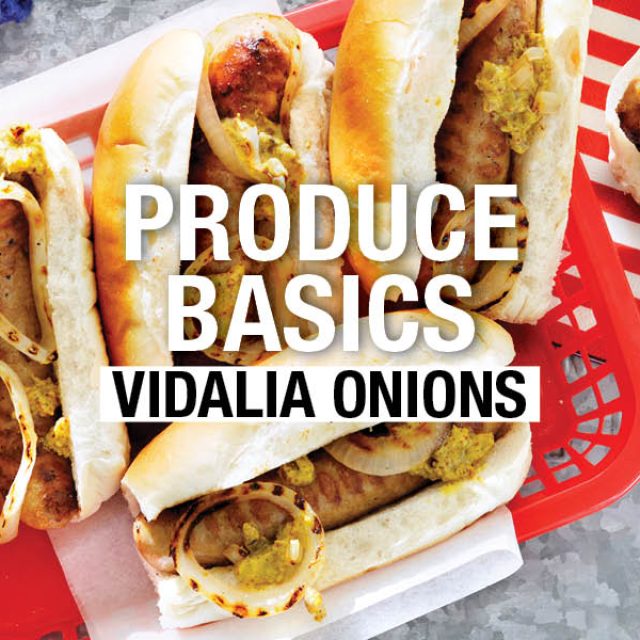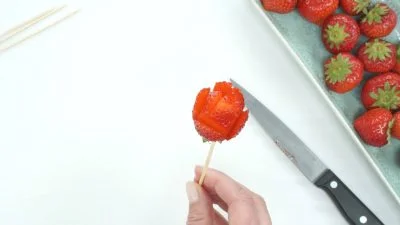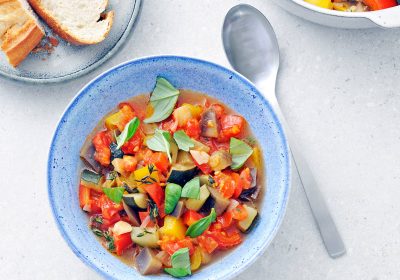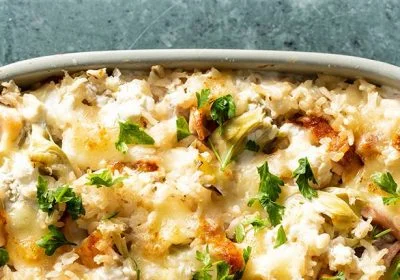Thank goodness for a fortuitous accident in the 1930’s or we wouldn’t be enjoying the sweet goodness of the Vidalia onion today. A farmer in Toombs County, Georgia, was trying to develop a hot onion and was surprised when he, instead, ended up with a sweet onion. He persevered and managed to sell that first crop and the rest is history.
Vidalia onions are grown in low-sulfur soils that prevent bulbs from developing a pungent taste. (It’s the sulfur that makes you cry when you slice an onion.) Since Vidalias contain fewer sulfur compounds, you’ll shed less tears when you slice them. They are grown over the winter and are, typically, at peak availability from April to August.
The water content in Vidalia onions is much higher than in regular onions which shortens their shelf life and makes them more susceptible to bruising. Here are a few tips to get the longest life and best flavor out of these sweet beauties.
- One way to store Vidalias is in the veggie bin of the fridge. Wrap each bulb individually in paper towels, which will help absorb moisture, and place them in the crisper with the vents closed.
- Another storage option is on elevated racks or screens, not touching, and in a cool, dry place.
- Don’t store Vidalias with potatoes – they make onions spoil quicker.
- Vidalias can be chopped and frozen. Chop evenly and spread on a cookie sheet, then place in the freezer. When completely frozen, remove and seal in freezer containers or bags. Remove the amount you want as needed.
- These sweet onions can be frozen whole. Peel, wash, and core jumbo Vidalias. Drop into a plastic freezer bag. Whole, frozen Vidalias can be baked, but note that freezing changes the onion’s texture, so frozen onions should be used for cooking only.
Here are a few Vidalia inspired recipes!

Sweet Onion Brisket

Fettuccini Alfredo with Chicken

Brats with Sweet Onion Mustard









